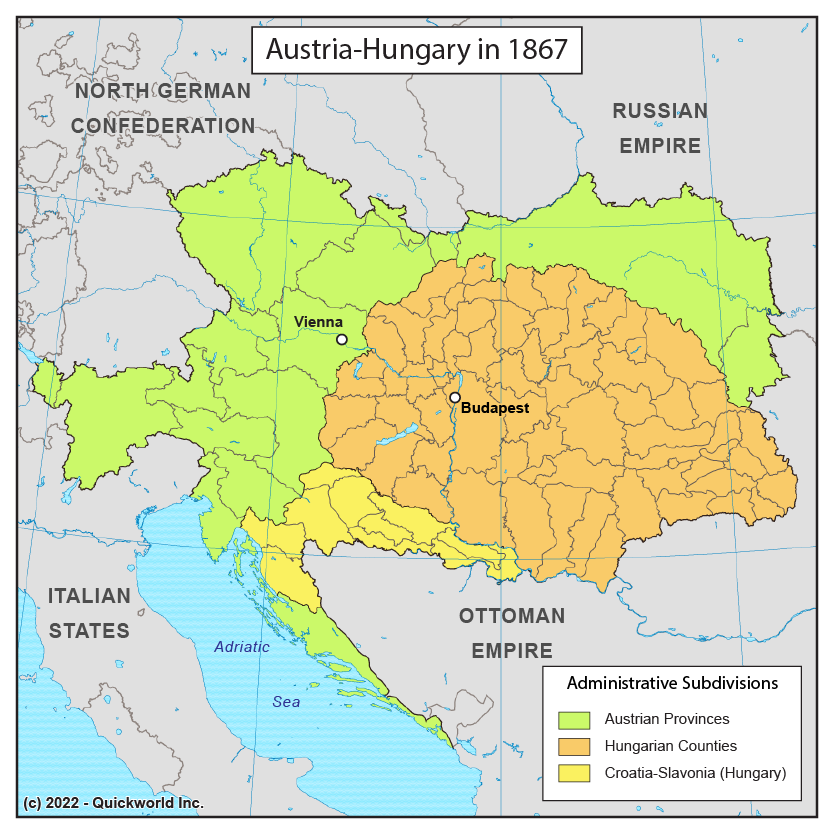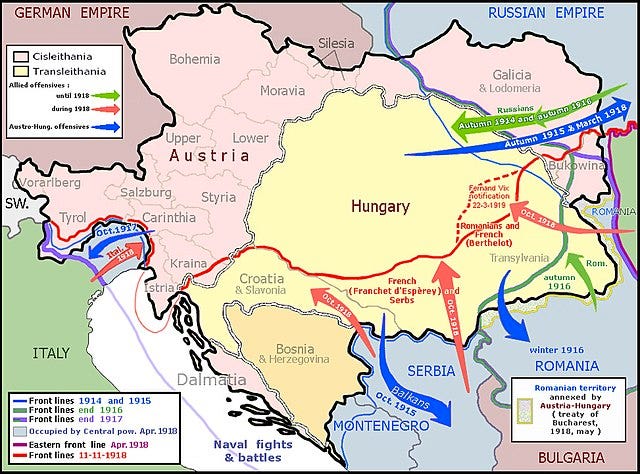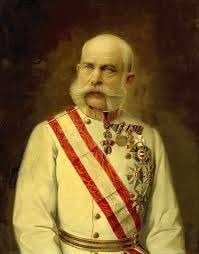If you haven’t already, please read the rest these two articles I wrote about the Hapsburg family before reading this one as to truly understand the family’s lifespan and their reign in Europe.
* The Rise of the Hapsburgs
* The Hapsburg Century
The Hapsburgs became the family of Europe and the New World, ruling over large swaths of land globally. However, as most powerful families do, they eventually sweep themselves into utter decline. The Hapsburg family will eventually split with one branch going extinct while the other losing their empire after centuries of rule. After the Habsburg Century, the family experienced a period of decline due to a major European conflict, the Thirty Years War. Let us unravel the intricate web of events and circumstances that contributed to the erosion of Habsburg power, spanning from the 17th century onwards.
The Thirty Years War (1618-1648) served as a watershed moment for the Habsburgs, plunging their vast domains into chaos and devastation. As staunch defenders of Catholicism, the Habsburg rulers found themselves embroiled in a protracted conflict against Protestant forces, exacerbated by dynastic ambitions and territorial disputes. The war exacted a heavy toll on Habsburg territories, leading to widespread depopulation, economic stagnation, and the erosion of centralized authority. The Peace of Westphalia in 1648, while bringing an end to the hostilities, signaled a new phase of challenges for the Habsburgs. The treaty, which recognized the sovereignty of individual states and established the principle of religious tolerance, undermined the Habsburgs' efforts to maintain hegemony over a fragmented empire.
The War of the Spanish Succession, spanning from 1701 to 1714, was a pivotal conflict that reshaped the political landscape of Europe and significantly impacted the Habsburg dynasty. At the heart of the conflict was the question of who would succeed the childless Hapsburg king Charles II of Spain to the Spanish throne.
The Habsburgs, who had established themselves as one of Europe's most powerful dynasties through strategic marriages and territorial acquisitions, sought to maintain their dominance by securing the Spanish inheritance for their candidate, Charles's closest Habsburg relative, Charles of Austria. However, this ambition was met with fierce opposition from other European powers, particularly France and England, who feared the emergence of a dominant Habsburg empire that would upset the balance of power on the continent. However, France would be the one to upset the balance of power through Louis XIV’s grandson, Philip of Anjou, becoming king of Spain. This brought the looming threat of a united French-Spanish empire, so the Austrians, the British, and the Dutch allied to overthrow the Bourbon in Spain. The conflict resulted in a protracted and bloody war that ultimately saw the Habsburgs suffer significant losses. The Habsburg territories were stretched thin as they simultaneously fought on multiple fronts against a coalition of powers led by France. Battles such as Blenheim (1704) and Ramillies (1706) dealt decisive blows to the Habsburgs and their allies, weakening their military capabilities and undermining their territorial holdings. Additionally, a Hungarian rebellion would strain the empire further of its resources.
A colored map of the alliances of the War of Spanish Succession.
Furthermore, the war exacted a heavy toll on the Habsburg economy and resources, leading to financial strain and internal unrest within their realms. The Habsburgs faced challenges in effectively governing their vast and diverse territories, which exacerbated existing tensions and hindered their ability to prosecute the war effectively.
In the end, the Treaty of Utrecht in 1713 and the Treaty of Rastatt in 1714 marked the conclusion of the War of the Spanish Succession. These treaties not only secured the Spanish throne for a Bourbon candidate but also imposed significant territorial losses and diplomatic concessions on the Habsburgs. Spain lost its Italian possessions, including Naples, Milan, and Sardinia to Austria, while the Spanish Netherlands (modern-day Belgium) would also be ceded to Austria. Sardinia eventually was ceded to Savoy, forming the Kingdom of Piedmont-Sardinia.
Map that shows the state of Europe after the Treaty of Utrecht, 1713.
The eighteenth century witnessed the emergence of Enlightenment ideals across Europe, challenging traditional structures of authority and governance. Emperor Charles VI (1685-1740) stands out in the family during this period for his efforts to secure the Habsburg succession and preserve the integrity of the empire during a time of external threats and internal challenges. Charles VI's pragmatic diplomacy and skillful negotiation resulted in the Pragmatic Sanction of 1713, which sought to ensure the inheritance of his daughter Maria Theresa and avert dynastic disputes. Despite his best efforts, Charles's reign witnessed the erosion of Habsburg influence in Italy and the loss of territories such as Naples and Sicily, signaling the beginning of the dynasty's decline in southern Europe. Empress Maria Theresa and her son Joseph II, initiated sweeping reforms aimed at modernizing the empire and consolidating power in attempts to reverse the conflicts that had brought the prestige of the family to decline. These reforms encompassed various aspects of administration, taxation, and legal systems, reflecting the dynasty's efforts to adapt to changing political realities.
However, the reforms of the Enlightenment era were met with resistance from entrenched interests within the empire, including the nobility and clergy. The implementation of centralized authority and the promotion of secularization encountered opposition from conservative forces, limiting the scope and effectiveness of reform initiatives. Moreover, the dynastic conflicts and external pressures, such as the partitions of Poland and the rise of Prussia, further constrained the Habsburgs' ability to assert their authority and influence.
The Napoleonic Wars, spanning the late 18th and early 19th centuries, had profound and far-reaching consequences for the Habsburg family, marking another significant chapter in their decline. As Napoleon Bonaparte's French Empire expanded across Europe, the Habsburgs found themselves embroiled in a series of conflicts that tested their power and resilience.
At the outset of the Napoleonic Wars, the Habsburg Empire, under the rule of Emperor Francis II, faced formidable challenges from Napoleon's military campaigns and political ambitions. The Habsburg territories in Central Europe became a battleground between Napoleon's forces and the Austrian armies, leading to devastating losses and territorial concessions for the Habsburgs. Battles such as Austerlitz (1805) and Wagram (1809) highlighted the Habsburgs' inability to withstand Napoleon's military prowess, resulting in further erosion of their influence and prestige. The Treaty of Pressburg in 1805 and the Treaty of Schönbrunn in 1809 forced the Habsburgs to cede significant territories to France and its allies, including parts of Italy and Germany. These territorial losses weakened the Habsburg Empire and undermined its position as a dominant European power. Moreover, the Napoleonic Wars exacerbated internal tensions within the Habsburg realms, as diverse ethnic and national groups within the empire sought greater autonomy and independence in the face of imperial decline.
Furthermore, the end of the Holy Roman Empire in 1806, largely orchestrated by Napoleon, dealt a final blow to the Habsburgs' traditional power structure. Emperor Francis II, facing the realities of Napoleonic dominance, abdicated the title of Holy Roman Emperor, signaling the dissolution of the millennia-old institution. The demise of the Holy Roman Empire reshaped the geopolitical landscape of Europe and further marginalized the Habsburgs within the continent's power dynamics. Napoleon would form a puppet state for France in Germany known as the Confederation of the Rhine which encompassed most of the former Holy Roman Empire.
Borders of the Confederation of the Rhine. Note Austrian losses in Tyrol and in Dalmatia.
In the aftermath of the Napoleonic Wars, the Congress of Vienna in 1815 attempted to restore stability and balance of power in Europe, albeit at the expense of the Habsburgs' territorial integrity. The Congress also brought the creation of the German Confederation to replace the defunct Holy Roman Empire, with Austria leading the newly formed Confederation. While the Congress reaffirmed the Habsburgs' control over their core territories, it also recognized the emergence of new nation-states and the weakening of Habsburg authority in peripheral regions.
It was during the nineteenth century where the Habsburg family’s empire would see swads of territory and autonomy being taken away. The dynasty witnessed the rise of nationalism as a potent force reshaping the political landscape of Europe. The Habsburg Empire, characterized by its diverse ethnic and linguistic composition, faced growing demands for autonomy and self-determination from various national groups within its borders. The emergence of movements such as Italian Risorgimento and Hungarian Magyarization posed formidable challenges to Habsburg authority, fueling aspirations for independence and statehood.
The Revolutions of 1848, which swept across Europe, had a profound impact on the Habsburg Empire, triggering widespread unrest and calls for constitutional reforms. While the dynasty managed to suppress the revolutionary uprisings, the events of 1848 exposed the underlying fissures within the empire and underscored the limitations of centralized authority. Emperor Franz Joseph I (1830-1916) assumed the throne against a backdrop of profound social and political upheaval, as the forces of nationalism and liberalism hit the empire. Austria would thereafter become a constitutional monarchy. The subsequent decades saw the Habsburgs grappling with nationalist movements in Hungary, Czech lands, and other regions, culminating in the Compromise of 1867 later on.
Map that shows a part of the 1848 revolutions within the Austrian empire.
The Italian Risorgimento brought the unification of the Italian states under the House of Savoy, ultimately rivaling the Austrians in the region. The Risorgimento culminated in the mid-nineteenth century with the leadership of figures such as Giuseppe Garibaldi and Count Camillo di Cavour. Garibaldi's military campaigns, known as the Expedition of the Thousand, aimed to liberate southern Italy from foreign rule and unite it with the northern Italian states. Meanwhile, Cavour, the Prime Minister of the Kingdom of Piedmont-Sardinia, pursued a diplomatic strategy to weaken Austrian influence and forge alliances with other European powers sympathetic to the Italian cause.
The decisive moment came in 1859 with the Second Italian War of Independence, also known as the Franco-Austrian War. This conflict saw Piedmont-Sardinia, allied with France, successfully challenging Austrian control over Lombardy. Subsequent diplomatic maneuvering and military campaigns led to further gains for the Italian cause, culminating in the annexation of Venetia in 1866 following the Austro-Prussian War and Third Italian War of Independence where Italy would join Prussia in attacking the Austrians. Piedmont-Sardinia would be the leading state in unifying the newly formed Italian kingdom, rivalring the Austrians in the region as they eyed up the Austrian territory of South Tyrol where plenty of Italians still resided. But how did the war with the Prussians also influence the further crumbling of the Hapsburg dynasty’s power in Europe?
The 1866 Prussian-Austrian War, also known as the Seven Weeks' War, had significant implications for the Habsburgs and further contributed to their decline in power and influence. The conflict emerged from tensions between the Austrian Empire, led by the Habsburgs, and the rising power of Prussia within the German-speaking territories of Central Europe. At the heart of the conflict was the question of leadership within the German Confederation, a loose association of German states. Prussia, under the leadership of Otto von Bismarck, sought to assert its dominance and leadership over the confederation, challenging the traditional hegemony of Austria, which had long been the leading Germanic power. Bismarck seeked to isolate Austria from the Confederation so that eventually, the German states can be united.
The Prussian-Austrian War proved disastrous for the Habsburgs, as their military forces suffered a decisive defeat at the Battle of Königgrätz in July 1866. The defeat highlighted the outdated and inefficient nature of the Habsburg military and exposed the empire's vulnerabilities in the face of Prussian military modernization and strategic planning.
The aftermath of the war saw the dissolution of the German Confederation and the emergence of the North German Confederation, under Prussian leadership. This development marginalized the Habsburgs within the German-speaking world and diminished their influence over German affairs. Furthermore, the war exposed internal divisions within the Habsburg Empire, particularly between its German-speaking and non-German-speaking territories, further weakening the cohesion of the empire. The unification of Germany under Prussian leadership in 1871, following the Franco-Prussian War, dealt a further blow to Habsburg power and influence in Europe. The newly formed German Empire, with Prussia at its helm, emerged as the dominant political and military force in Central Europe, overshadowing the Habsburg Empire. Due to Prussian support for Hungarian revolutionaries, the Hapsburg had to deal with their Hungarian population whom were long unhappy with being overshadowed and neglected by their Austrian overlords.
The Compromise of 1867, also known as the Ausgleich, transformed the Habsburg Empire into the Austro-Hungarian Dual Monarchy, granting Hungary considerable autonomy within the framework of a shared monarchy. While the Ausgleich temporarily stabilized the empire and appeased Hungarian aspirations, it failed to address the broader challenges of ethnic diversity and national identity.
Map that shows the division of the newly formed Austria-Hungary in 1867.
The inherent contradictions of the Dual Monarchy, exacerbated by economic disparities and cultural tensions, contributed to its eventual unraveling. In the decades leading up to World War I, the Habsburg Dynasty faced mounting internal and external pressures that further eroded its power and influence. The dynasty struggled to reconcile the aspirations of its diverse subjects with the imperatives of centralized authority, leading to simmering ethnic tensions and nationalist movements within its multi-ethnic empire. The rise of political ideologies such as socialism and pan-Slavism posed ideological challenges to the traditional monarchy, undermining the legitimacy of Habsburg rule and fostering dissent among disenfranchised populations. Moreover, economic disparities persisted within the empire, exacerbating social inequalities and fueling grievances against the ruling elite. These internal fissures weakened the cohesion of the Habsburg Empire and left it vulnerable to external threats and geopolitical rivalries.
The Hungarian Magyarization were a series of policies implemented by the Hapsburg rulers in their Hungarian territories which alienated and marginalized non-Hungarian ethnic groups, particularly the Slavic and Transleithanian (Romanian) populations. By prioritizing Hungarian language and culture in administration, education, and public life, the Habsburgs inadvertently fueled resentment and opposition among ethnic minorities, who viewed the policy as a threat to their linguistic and cultural identity. This alienation eroded the legitimacy of Habsburg rule and undermined efforts to maintain imperial cohesion, as ethnic grievances fueled nationalist aspirations and separatist movements.
The policies deepened the divide between Hungary and other parts of the empire, exacerbating tensions within the Austro-Hungarian Dual Monarchy. While the Compromise of 1867 had granted Hungary considerable autonomy within the empire, the Magyarization policy further entrenched Hungarian dominance at the expense of other nationalities. This imbalance of power within the Dual Monarchy strained relations between the Hungarian government and the Habsburg monarchy, as competing interests and divergent agendas hindered effective governance and coordination.
Artist rendering of the ethnic groups that was within the Austro-Hungarian Empire.
Furthermore, the Magyarization policy contributed to the broader decline of the Habsburg Dynasty by exacerbating internal fissures and weakening imperial cohesion. The imposition of Hungarian cultural hegemony alienated not only ethnic minorities within the empire but also non-Hungarian elites who had previously supported Habsburg rule. As nationalist sentiments intensified across the empire, the Habsburgs found themselves increasingly isolated and vulnerable to external pressures, both from rival powers and from within.
The outbreak of World War I in 1914 exposed the Habsburg Dynasty to its greatest test yet, as the empire became embroiled in a catastrophic conflict that would hasten its demise. Despite initial hopes of securing a quick victory, the Habsburg family under Emperor Franz Josef found themselves ill-equipped to withstand the rigors of modern warfare and the challenges posed by more industrialized adversaries.
During World War I, Austria-Hungary experienced a precipitous decline that ultimately spelled the end of Habsburg rule. The empire's military setbacks, marked by a series of defeats on the Eastern and Western fronts, exposed the weaknesses of its armed forces and undermined public confidence in the dynasty's ability to govern effectively. The prolonged and bloody nature of the conflict exacerbated economic hardships and social discontent, as wartime shortages and inflation fueled popular resentment against the Habsburg regime. In addition, the empire's multi-ethnic composition became a liability as nationalist aspirations intensified among its constituent nationalities.
Detailed map of the frontlines of Austria-Hungary throughout the war until 1918.
Portrait of Franz Joseph I of Austria-Hungary at the time of his life during World War One.
Franz Josef would die in 1916, leaving the empire to a young Karl I. Karl I inherited an empire in crisis. The war exacerbated existing tensions within the empire, as ethnic and nationalist aspirations threatened to tear apart the fabric of the multinational state. The new ruler attempted to navigate the challenges facing the empire by pursuing peace initiatives and reforms aimed at addressing the grievances of its various ethnic groups. However, his efforts were hampered by the deep-rooted divisions within the empire and the deteriorating military situation on the Eastern and Italian fronts. Karl I's reign as Emperor of Austria-Hungary was marked by a series of failures that ultimately contributed to the downfall of the Habsburg dynasty and the collapse of the empire. Despite his earnest attempts to address the myriad challenges facing the empire, Karl's efforts were undermined by the deep-seated divisions and tensions within its diverse territories. His attempts at reform were met with resistance from entrenched interests and nationalist movements seeking independence or autonomy.
One of Karl's major failures was his inability to effectively manage the empire's involvement in World War I. His decision to pursue peace negotiations in the midst of the conflict in 1917, while noble in intention, ultimately proved fruitless as the war continued to escalate. Additionally, his attempts to implement domestic reforms, such as granting greater autonomy to the empire's nationalities, were too little, too late to quell the rising tide of nationalism and separatism. Ultimately, Karl's reign came to symbolize the waning power and relevance of the Habsburgs in an era of rapid political and social change.
Throughout the war, nationalist movements and independence revolts erupted across the empire, further fracturing imperial unity and sowing the seeds of disintegration. In the Balkans, the South Slavic populations, including Serbs, Croats, and Slovenes, agitated for independence from Austrian and Hungarian rule, inspired by the pan-Slavic ideals and the desire to create a unified South Slavic state. In fact, the assassination of Archduke Franz Ferdinand in 1914, a pivotal event that triggered the outbreak of World War I, had its roots in the nationalist aspirations of Bosnian Serb radicals seeking to break free from Habsburg domination.
Meanwhile, in Hungary, dissatisfaction with the Dual Monarchy's centralized authority and economic policies fueled demands for greater autonomy and self-determination. The Hungarian government, led by Count István Tisza, sought to maintain the integrity of the empire while accommodating Hungarian nationalist aspirations. However, tensions between the Hungarian government and the Habsburg monarchy persisted, as competing interests and divergent agendas hindered effective governance and coordination.
As the war dragged on and the empire's fortunes waned, calls for independence grew louder, particularly among the Slavic and Romanian populations in the empire's eastern territories. The emergence of the Czechoslovak and Yugoslav legions, composed of soldiers from ethnic minorities fighting alongside the Allies, further undermined the cohesion of the Habsburg armed forces and bolstered the aspirations of nationalist movements. In October 1918, facing military defeat and internal unrest, Emperor Charles I of Austria-Hungary attempted to negotiate a separate peace with the Allies, but his efforts were in vain. Faced with mounting pressure from within and without, the Habsburg Dynasty collapsed, and Austria-Hungary disintegrated into a patchwork of successor states, marking the end of centuries of Habsburg rule in Central Europe.
The Habsburg Dynasty left an indelible mark on European history, shaping the continent's political, cultural, and social landscape for centuries. At its zenith, the Habsburg Empire encompassed vast territories across Central and Eastern Europe, spanning from Spain to the Holy Roman Empire and beyond. Through shrewd diplomacy, strategic marriages, and military conquests, the Habsburgs established themselves as one of the preeminent ruling families of Europe, wielding immense power and influence.
However, the very factors that contributed to the Habsburgs' ascendancy also sowed the seeds of their eventual decline and failure. The dynasty's sprawling domains, characterized by their ethnic and linguistic diversity, presented formidable challenges to centralized governance and imperial cohesion. Attempts to impose uniformity and centralization often sparked resistance and resentment among subject populations, leading to internal discord and fragmentation.
Moreover, the Habsburgs' dynastic ambitions and territorial acquisitions fueled geopolitical rivalries and conflicts, draining the empire's resources and straining its military capabilities. The Thirty Years War, the War of Spanish Succession, and other protracted conflicts exacted a heavy toll on Habsburg territories, plunging them into economic hardship and social upheaval. Despite periodic attempts at reform and modernization, the Habsburgs struggled to adapt to the evolving political and social currents of the modern era, leading to a gradual erosion of their power and influence.
Ultimately, the decline and failure of the Habsburg Dynasty can be attributed to a combination of internal weaknesses, external pressures, and historical contingencies. The rise of nationalism, the emergence of rival nation-states, and the onset of industrialization reshaped the geopolitical landscape of Europe, rendering the traditional model of dynastic rule increasingly untenable. The collapse of the Habsburg Empire in the aftermath of World War I marked the end of an era and the dawn of a new era of nation-states and self-determination.
Despite their eventual downfall, the Habsburgs left a lasting legacy that continues to resonate in Europe and beyond. Their patronage of the arts and sciences, their contributions to architecture and culture, and their role in shaping the course of European history endure as testaments to their enduring influence. Moreover, the Habsburg Empire's legacy of multiculturalism and tolerance, despite its flaws and shortcomings, remains a source of inspiration and reflection in an increasingly interconnected and diverse world.


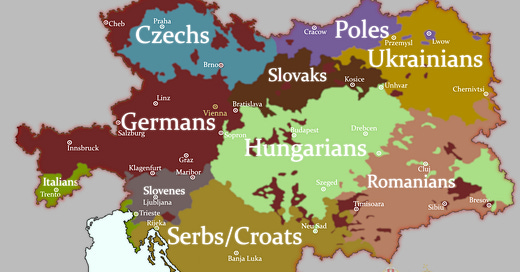


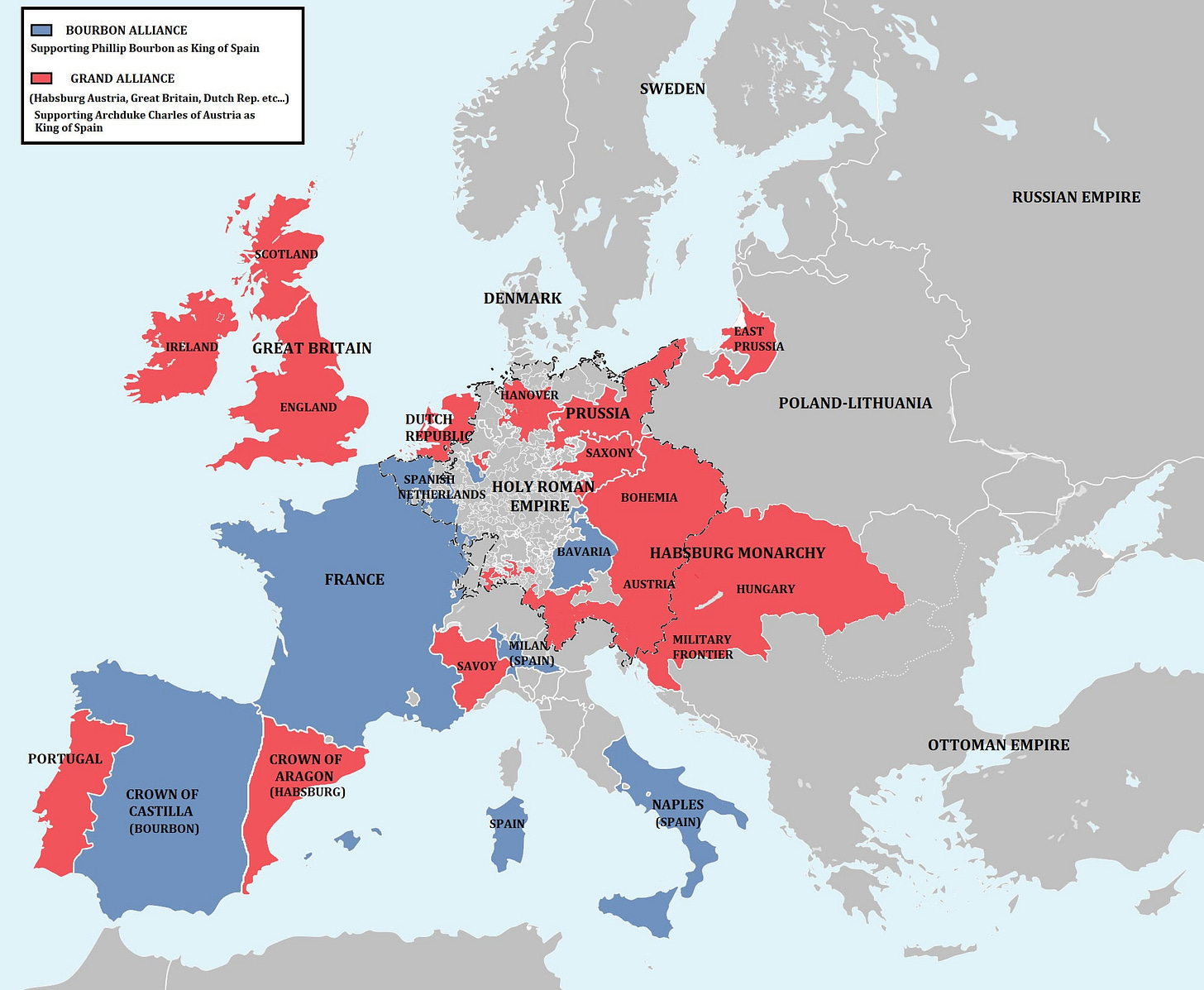
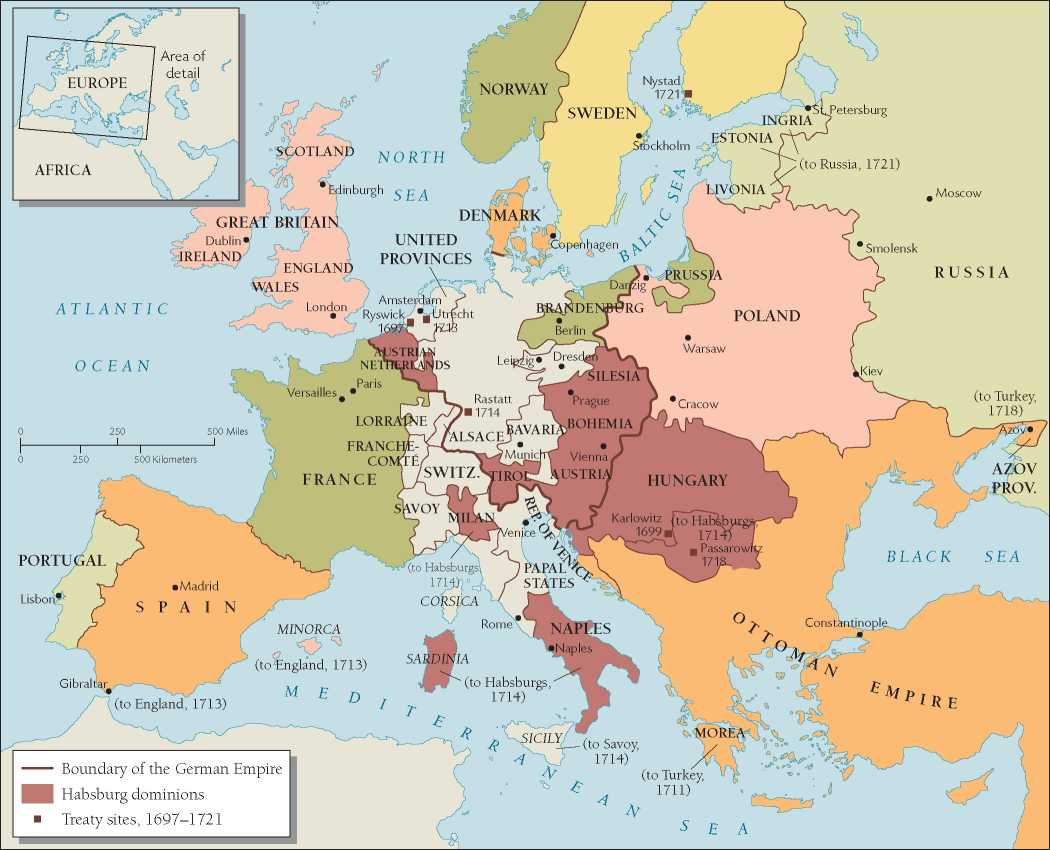

![Hungarian Revolution [1848-49] | Every Day Hungarian Revolution [1848-49] | Every Day](https://substackcdn.com/image/fetch/$s_!Ktzh!,w_1456,c_limit,f_auto,q_auto:good,fl_progressive:steep/https%3A%2F%2Fsubstack-post-media.s3.amazonaws.com%2Fpublic%2Fimages%2Fc599f6c9-737a-4d1a-90e5-e4ac56aa8984_640x480.jpeg)
